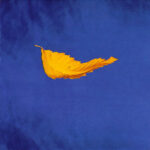The Horst Wessel Song, known in German as Horst-Wessel-Lied, holds a grim place in history as the anthem of the National Socialist German Workers’ Party (NSDAP), or Nazi Party. For a significant period, it also served as a co-national anthem of Nazi Germany, second only to Deutschlandlied. Understanding the lyrics of this infamous nazi marching song provides crucial insight into the ideology and propaganda of the Third Reich.
Origins of the Horst Wessel Song
The song is named after Horst Wessel, a figure elevated to martyrdom by Nazi propaganda. Wessel was not a soldier or statesman, but a former law student who became a street fighter and Nazi political activist, joining the Sturmabteilung (SA), the Nazi paramilitary wing, in 1926. His lyrics were set to a pre-existing melody, likely a traditional tune. Wessel’s death in January 1930, following a conflict with communists, was exploited by Joseph Goebbels and the Nazi propaganda machine. They presented Wessel as a hero and his song as the anthem of their movement.
Lyrics and Meaning of the Nazi Anthem
The lyrics of this nazi marching song are a powerful tool for understanding Nazi ideology. The opening lines, “Die Fahne hoch die Reihen fest geschlossen” (“The flag is high, our ranks are tightly closed”), immediately evoke images of unity, strength, and unwavering loyalty to the Nazi cause. The song continues to glorify the SA (“S.A. marschiert mit ruhig festem Schritt” – “The S.A. marches with silent solid steps”), presenting them as disciplined and resolute.
Alt text: SA (Sturmabteilung) brownshirts marching in Berlin, holding Nazi flags high, during a rally. The image captures the disciplined ranks and intimidating presence associated with Nazi power and propaganda, visually representing the themes of unity and forcefulness found in Nazi marching song lyrics.
The lyrics also demonize their political enemies, “Rotfront und Reaktion” (“Red front and reaction”), portraying them as those who murdered fellow “comrades.” The song culminates in a vision of Nazi dominance, “Bald flattern Hitler-fahnen Uber allen Strassen” (“Soon will fly Hitler’s banners over every street”), promising an end to “slavery,” in Nazi terms, and the dawn of their envisioned “freedom.”
In conclusion, the Horst Wessel Song, with its aggressive and nationalistic Nazi Marching Song Lyrics, served as a potent symbol of Nazi power and ideology. Analyzing these lyrics provides a chilling glimpse into the propaganda that fueled the Third Reich and its devastating impact on history.


